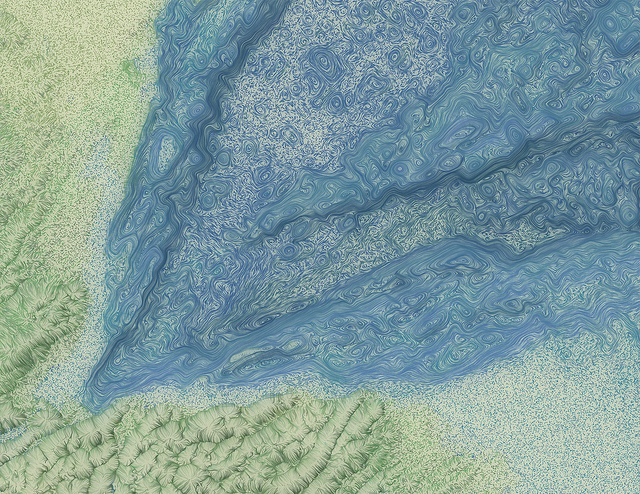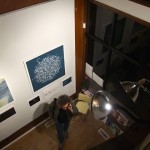 The Blindfold Gallery (Seattle) showed a selection of work from the Pond and Rain series in spring 2012. Most pieces from the show are in this flickr gallery. My artist statement is below, and I expanded on some of it in this interview with SeattleArtBloc.
The Blindfold Gallery (Seattle) showed a selection of work from the Pond and Rain series in spring 2012. Most pieces from the show are in this flickr gallery. My artist statement is below, and I expanded on some of it in this interview with SeattleArtBloc.
Artist Statement
I’m an oceanographer. I work with computer models of ocean currents and plankton ecology, trying to understand how nutrients and energy flow from organism to organism, from rivers to the sea, from estuaries to coasts to the deep ocean and back. Doing this work, building one’s intuition for these processes, is a slow matter of acclimation, like letting one’s eyes adjust to a dark room. The seethe of motion at very large and very small scales in the ocean gradually takes on form, settles in the mind, becomes navigable, arranges itself like a map or a set of assembly instructions.
Nothing in the ocean actually goes anywhere, even though it’s all in constant motion: it just cycles within cycles within cycles. There’s a comfort in that. As the water cycle above, or the circulation of the North Pacific, so also the cycle of growth and decomposition among the plankton and their predators. There’s a very old thread in science and theology that imagines such cycles as crystalline, perfect, nested like heavenly clockwork, amenable to theory-making. There must be something to that or else math wouldn’t work as well as it does, and I am a big believer in math. But the ocean doesn’t look like that, living systems don’t look like that. I spend a lot of time coaxing math into admitting to a reality more interesting than perfect circles.
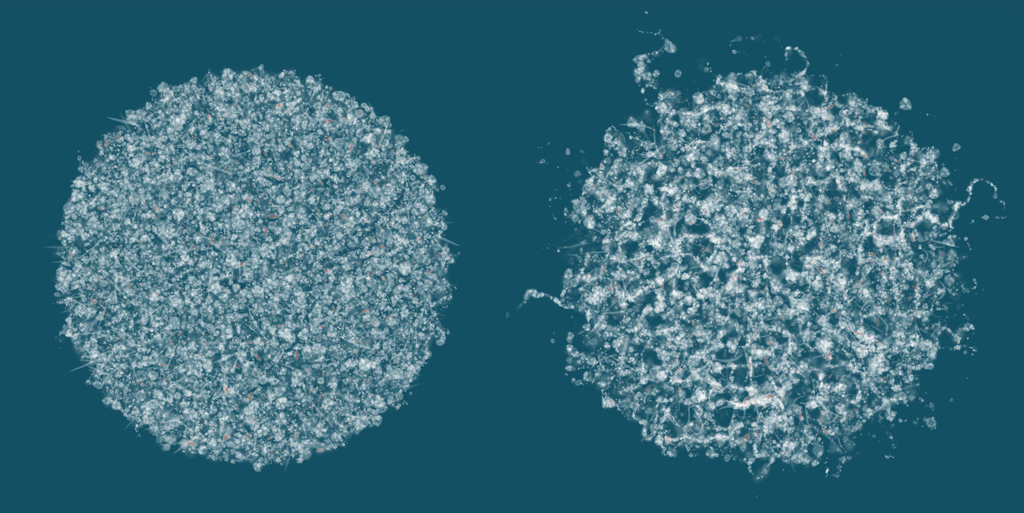
The work in this show isn’t science, although it and my scientific work share a vocabulary and do talk to each other in the evenings. A few of the pieces here were made by a camera, but most of them are computational: that is, generated from a handful of my ideas and instructions by a very patient computer. There are two computational series here.
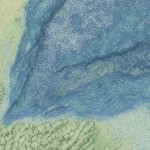 In the “Rain” series, the instructions are to release thousands or millions of little particles into a imagined landscape of one sort or another (a random field of mathematically defined hills and valleys, or real topography taken from some place on earth, or the topography of color in a snapshot) and simulate the paths they take as they run downhill following gravity, or else follow contours around the landscape at right angles to gravity. The underlying landscapes are never drawn directly, but gradually revealed by the particles’ traces.
In the “Rain” series, the instructions are to release thousands or millions of little particles into a imagined landscape of one sort or another (a random field of mathematically defined hills and valleys, or real topography taken from some place on earth, or the topography of color in a snapshot) and simulate the paths they take as they run downhill following gravity, or else follow contours around the landscape at right angles to gravity. The underlying landscapes are never drawn directly, but gradually revealed by the particles’ traces.
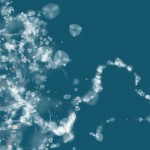 In the “Pond” series, I started with two dynamic elements: first, a little “stalk” shape, each of which is actually not just a shape but a self-contained physics simulation, held up and made pliable by a framework of hidden springs; second, a field of eddies and closed currents, whose texture I can control but whose details I can’t. Then I place tens or millions of the stalks in the eddy field, start time moving forward in the simulation, and come back later to see what happened.
In the “Pond” series, I started with two dynamic elements: first, a little “stalk” shape, each of which is actually not just a shape but a self-contained physics simulation, held up and made pliable by a framework of hidden springs; second, a field of eddies and closed currents, whose texture I can control but whose details I can’t. Then I place tens or millions of the stalks in the eddy field, start time moving forward in the simulation, and come back later to see what happened.
